School History - Our Building
Prior to the opening of Crestwood Elementary School on February 29, 1956, our students were housed at Garfield Elementary School. While at Garfield, future Crestwood teachers and students were administratively grouped separately from Garfield’s staff and students with the intention that Crestwood’s teachers and their classes would move together to the new building when it opened.
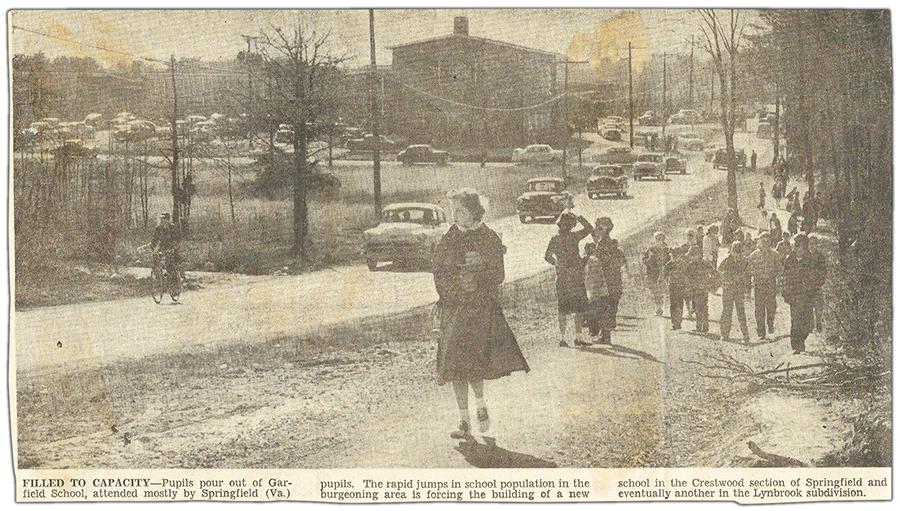
Garfield’s principal, Woodrow Thomas Robinson, served as the principal of the Crestwood-bound students and staff until January 1956, when Evelyn Lynn was appointed principal of Crestwood Elementary School. 16 teachers and approximately 540 students transferred from Garfield to Crestwood in February.
What was cool was how we moved from Garfield to Crestwood. School buses came and our desks were put on the buses and taken to Crestwood. The kids who were going to Crestwood walked with their classmates and teacher, single file, up Old Keene Mill Road, crossed the road at Hanover Avenue, and continued on Hanover to Crestwood. We lived on Amelia Street, and it was great to finally be in a school that was only a couple blocks from home.
~ Pat Springer, Crestwood Alumna
Design and Construction
Crestwood Elementary School was designed in 1954 by the architecture firm of Willgoos and Chase, and the original 16-classroom building was constructed by E. L. Daniels, Inc. of Arlington, Virginia, at a cost of $493,616. Construction began in April 1955, but a nationwide shortage of steel hampered construction progress. In addition to the 16 classrooms, the original building had a teacher workroom, a health clinic, a library, administrative offices, a kitchen, and a cafeteria that also doubled as an auditorium.
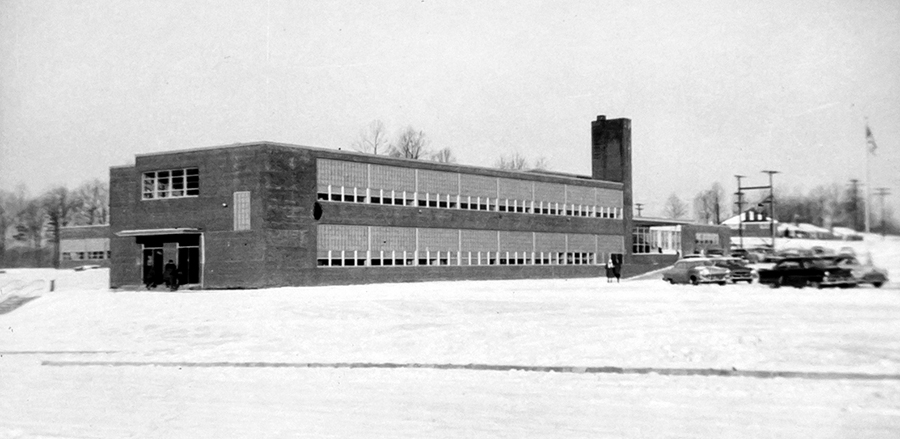
Crestwood Elementary was dedicated at a ceremony on May 8, 1956. The dedication was held during a regular monthly meeting of the joint Garfield and Crestwood P.T.A. at Crestwood Elementary. Local dignitaries, P.T.A. members, school staff, and students were present. Cub Scout Pack 691, still in our area today, presented the colors, and an American flag that had flown over the United States Capitol was donated to our school.
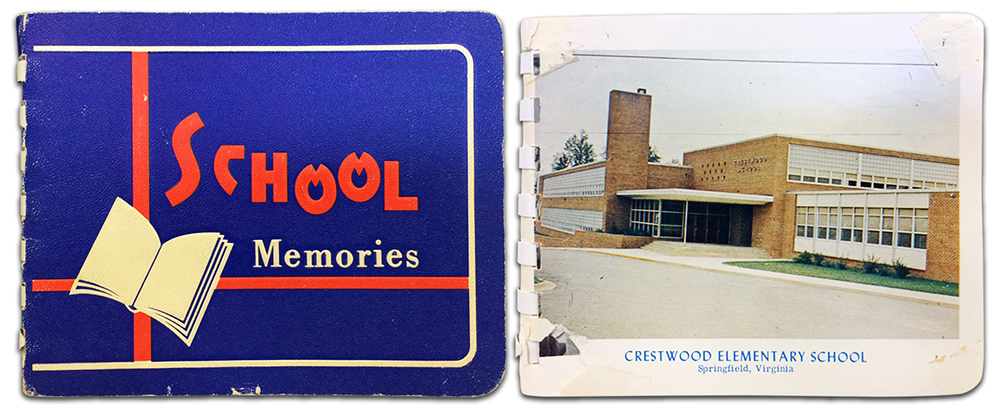
During the summer of 1956, construction began on a six-classroom addition to Crestwood Elementary School. The addition was built by Earl K. Rosti, Inc., of Falls Church, Virginia, at a cost of $104,521. At the start of Crestwood’s second year in September 1956, our school was already overcrowded. Children from the new Lynbrook and North Springfield neighborhoods were housed at Crestwood until Lynbrook Elementary School opened in February 1957, and North Springfield Elementary School opened in September 1957. Prior to the opening of these schools, Fairfax County Public Schools (FCPS) administrators rented Sunday School classrooms in nearby churches to serve as temporary classroom spaces. Enrollment in the Greater Springfield area schools stabilized in the mid-1960s and gradually declined during the 1970s.
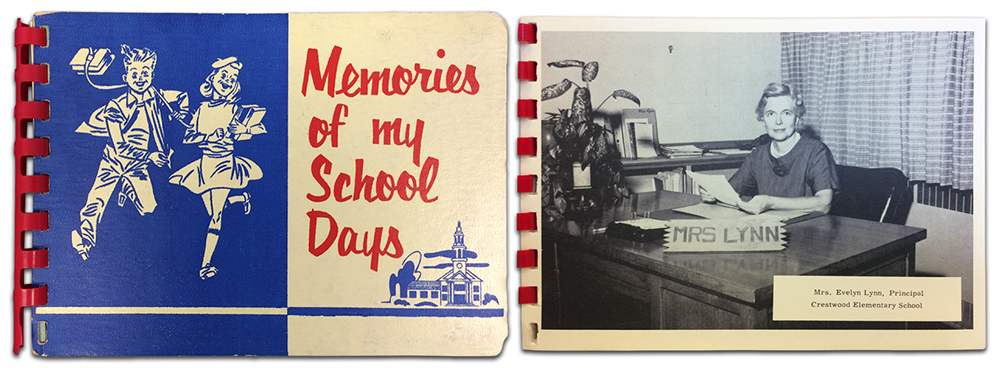
A Different Time
In the 1950s, FCPS students had to follow a strict dress code. Children were not allowed to wear t-shirts or jeans. Boys had to wear button-down shirts, tucked into their pants. Girls were only allowed to wear dresses or skirts, with either ankle or knee socks. Fears of a nuclear conflict between the United States and the Soviet Union were ever present, and air raid drills were held at Crestwood in which students practiced going into the hallways and getting into what was called the "tuck and duck" or "turtle" position.


In the 1950s, the majority of FCPS teachers were female—in fact, 15 of Crestwood’s first 16 teachers were female. Crestwood's first teachers earned between $3,400 and $4,400 per year, depending on their years of experience and level of education.
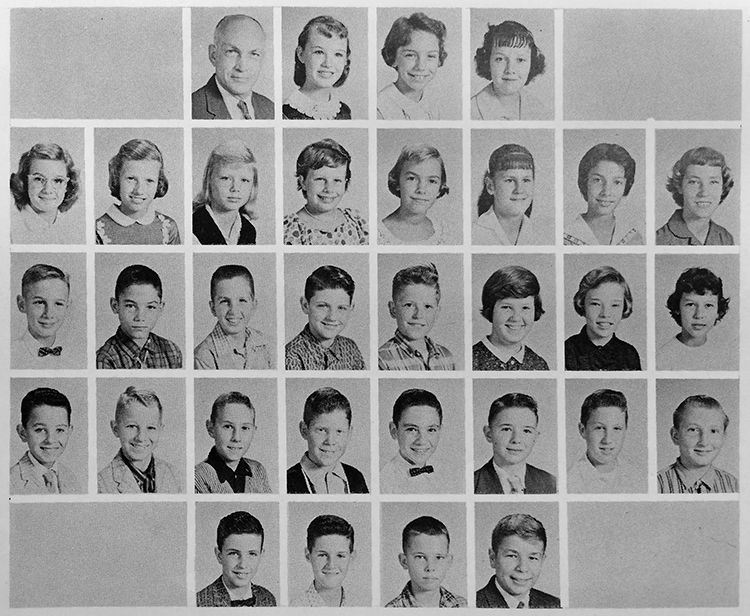
Elementary schools in Fairfax County educated children in grades 1-7 until 1960—when FCPS opened its first intermediate schools—and there were no kindergartners at Crestwood until 1968. A kindergarten program was piloted in several schools in 1967 and proved so successful that one year later FCPS implemented kindergarten county-wide.

When Crestwood opened, public schools in Virginia were segregated by race. In 1965, almost every former all-African-American FCPS elementary school ceased operation (one notable exception is Louise Archer Elementary School in Vienna). These schools were located in predominantly African-American enclaves, necessitating the busing of students out of these neighborhoods to formerly all-white schools.

School segregation and residential segregation were deeply intertwined in Virginia. Since at least the early 20th century, legal land documents for Springfield area properties had language in them which was designed to permanently restrict the sale of the land to Caucasians only. The restrictions “ran with the land,” meaning that no future owner of the property could undo this practice. These restrictions were already in place on much of the land when developers purchased it, so homes in nearly all of the newly developed neighborhoods like Crestwood were sold exclusively to white families. In 1968, the Fair Housing Law was passed, eliminating racial barriers to homeownership. Crestwood's student body remained largely Caucasian until the 1980s, by which time the effects of the passage of the Fair Housing Law began to be evident in Fairfax County’s suburbs.

Renovations and Additions
When Crestwood Elementary School opened, our school did not have a gymnasium. Our school also lacked classrooms for music, art, and science. In the 1970s, the Crestwood P.T.A. lobbied the Fairfax County School Board to remedy these inequities. An upgrade to the lighting, heating, and ventilation systems was approved by the School Board in 1976, and additional classrooms and a gymnasium were constructed in 1978.
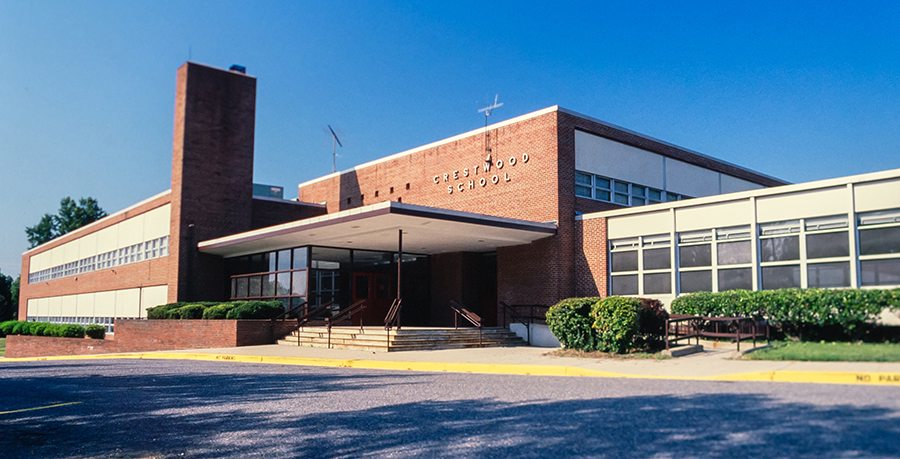
Student enrollment gradually declined at Crestwood from 436 in 1975 to 349 in 1985. Beginning in 1984, children from the newly built Saratoga neighborhood south of Springfield on Rolling Road were bused to Crestwood, Forestdale, and Lynbrook elementary schools where classroom space was readily available. Children from Saratoga attended Crestwood until the opening of Saratoga Elementary School in September 1989.
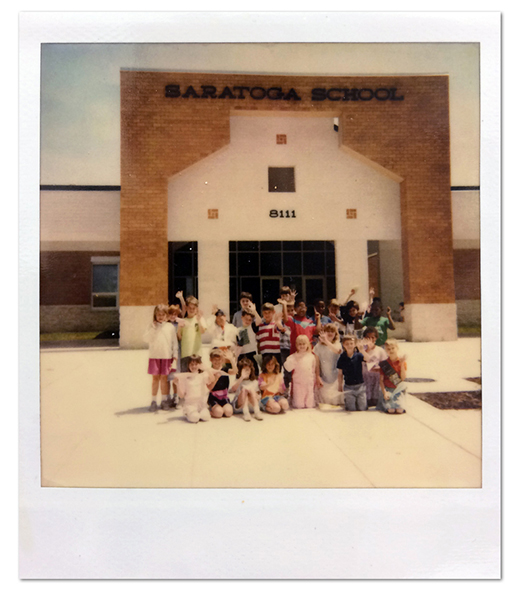
In 1988, air conditioning was added building-wide at Crestwood. Prior to this time, teachers propped open their classroom windows on warm days to allow the air to circulate. The first building-wide renewal of Crestwood began construction in the spring of 1999, and was contracted to the Falls Church Construction Corporation at a cost of $4.8 million. A modular classroom addition was constructed in 2004, and the most recent addition to our school was built in 2012 by the Pavone Construction Company at a cost of $2.6 million. Watch our building change shape in this animated series of aerial photographs courtesy of the Fairfax County Park Authority.
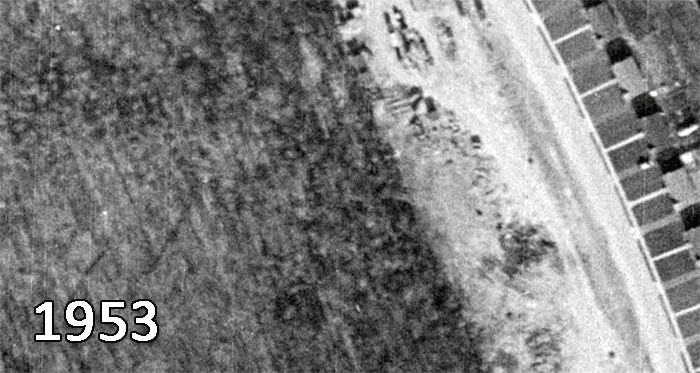
A True Community School
Following the passage of the Fair Housing Law in 1968, Springfield area homeownership restrictions ceased. As the 1970s drew to a close, the majority of the children born during the “baby boom” of the 1950s and 60s had graduated high school. As their parents’ generation began to retire and move away, Springfield and its affordable housing became a magnet for new immigrant families to the United States from Southeast Asia and Central America. The ethnically and culturally diverse Crestwood school community we treasure today was a product of these changes, which occurred gradually between 1980 and 2000.
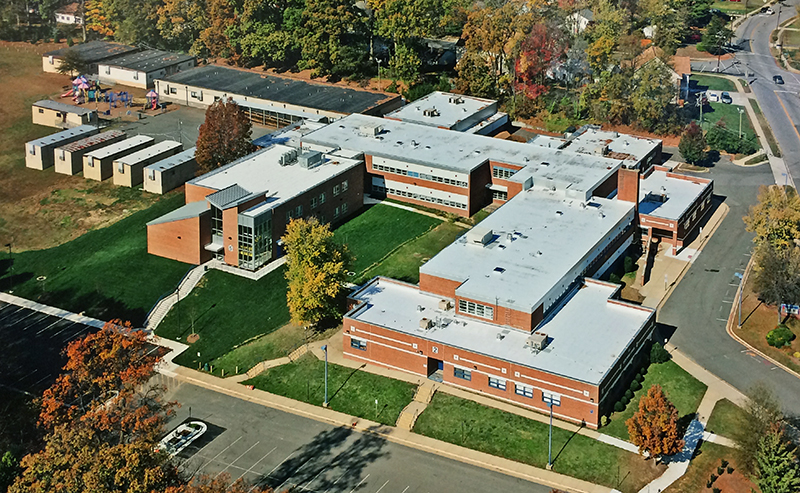
On the occasion of our school’s 50th anniversary in 2006, the Crestwood community was abuzz with excitement. A new school song was written by teachers Debra Lindsay and Jeff Copp, and students and staff alike were eager to learn about our school’s past. Festivities were held on September 12, 2006, and 42 fifth and sixth graders performed at two assemblies, one during the school day and one during the evening for parents. Reflecting on Crestwood’s long history, cafeteria hostess Eleanor Williams wrote, “Over the past 50 years, the Crestwood community has become a very progressive community in the heart of the Springfield area and educates hundreds of students each year. The mission of Crestwood Elementary School is to offer each student the skills, knowledge, and experiences necessary to be successful students and productive members of society. The staff envisions a school where academic excellence is paramount, the arts are celebrated, cultural and linguistic diversity is honored, and all learners meet their personal academic goals. Over the years ethnic and cultural diversity have brought a unique spirit to the school, as it continues its commitment to academic excellence. Crestwood is a true community school working with parents and children building a better future for the entire Crestwood community.”
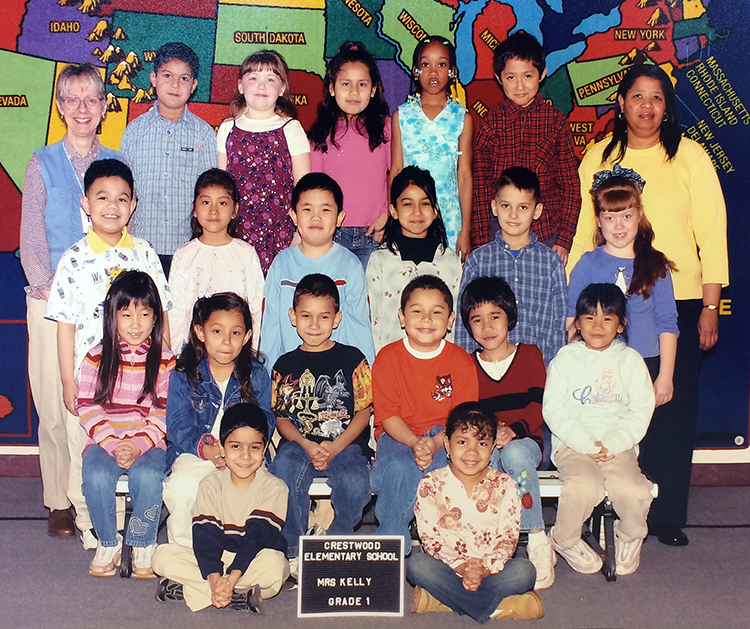
Crestwood's School History was written with assistance from Robyn Carter.

